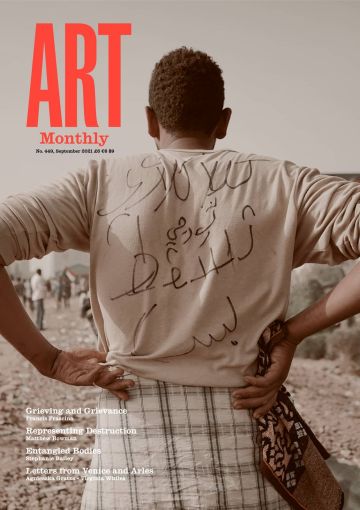Review
Tino Sehgal at Blenheim Palace
Adam Heardman witnesses an encounter between relational aesthetics and rarefied pomp

Blenheim Park and Gardens, location for Tino Sehgal’s performances
Somewhere in the bowels of Blenheim there is a painting of Winston Churchill, perhaps the Palace’s most well-known former resident, alongside his racehorse, which was genuinely named Colonist II. The painting has that flat and robust realism of commissioned 18th-century portraits whose aim is to establish ownership over the thing depicted (think Thomas Gainsborough’s c1750 depiction of Mr and Mrs Andrews in front of their land or – a closer visual link – those bloated, boxy paintings of prize cows).
Churchill lost the 1945 general election to Labour by a landslide and, by 1949, was bored and petulant in his duties as ‘mere Leader of the Opposition’ (as one chronicler at the International Churchill Society describes it). So he bought a racehorse. The ICS goes on to describe Colonist II as being ‘known for preferring always to race in front of his competition’, while political cartoons of the day delighted in the fact that Colonist II also preferred cornering to the right, reflecting the increasingly right-wing politics of its owner.
Add to all this the original status of the land as a gift to the Duke of Marlborough after victory in the Battle of Blenheim, and you have a perfect setting for a demonstration of outrageous nationalist pride cloaking a barely suppressed colonial guilt. Above the door into the palace from the Great Court is a coat of arms bearing the motto of the Order of the Garter, ‘Honi soit qui mal y pense’ (Shame on anyone who thinks evil of it), and, beneath this slogan, in the Great Court itself, the first ‘act’ of artist Tino Sehgal’s new piece takes place (Interview AM359).
A large group of performers – some trained professionals, most local residents – emerge from the crowds of visitors and begin stylised movements, speaking and singing in and out of harmony. Wow. Ooh. Wah-waow. Doowip. They set themselves up in opposing ranks, like caryatids or soldiers, cracking plosives across the courtyard like musket fire. The building and its attendant statues participate by echo. Two figures dance together, half-wrestling, half-embracing. Starting unannounced and in their midst, it baffles the Churchill fandom and the tourists alike.
Entering the palace’s Great Hall, you find two people on the floor entwined in a passionate embrace. They kiss and grab and gyrate lustfully with roving hands, becoming extremely sexy with it, as amorous lances of sunlight variegate the hall’s shadows and creep into the gaps between the two lively bodies. The room’s usual reverent hush is cut through with gasps and the sounds of hungry lips, legs meeting arms meeting marble meeting legs.
Fifty feet above the lovers, Sir James Thornhill’s allegorical frescoes depict the Duke of Marlborough dressed up as Mars, kneeling before Britannia, Mistress of the World. He’s showing her a military map outlining his victory in the Battle of Blenheim, on which battalions of soldiers are represented by little triangles. Was Churchill channelling this painting from back home when pushing toy boats around maps of the Dardanelles Strait or Gallipoli, his own miniature diorama of mass death, arranging those two spectacular failures in the First World War? Sehgal’s piece upsets all that murderous warplay with two real bodies doing what makes them feel most alive.
Moving outside into Capability Brown’s ‘picturesque’ gardens, we are met with a vast lawn dotted with people, crouched like little Auguste Rodin sculptures or birds sunning themselves. They slowly rise and begin moving around the space. Get close enough to any of them and they begin to address you, like non-playable characters in a videogame or figures from Dante’s Divine Comedy meeting your eye and telling stories. One man tells me how liberating it was to find his own, unimpeded route up Snowden. A young woman recalls being unexpectedly moved by a frivolous TikTok craze. Blenheim Art Foundation’s exhibitions assistant, Helen Neven, assures me that these are the performers’ own tales, drawn from personal experience.
Throughout the grounds, visitors will stumble across a solo singer in an exotic garden, breaking off to look you in the eye and speak the work’s title: This You, Tino Sehgal, 2006. A trio perform a pastoral drama round a fountain with beatbox versions of Beethoven. Four people enter the Water Terrace fountain while others sing, eventually to be drowned out by the loud chord of a wind organ overheard from the palace’s library. What does it all mean? That’s a difficult question. But Sehgal’s impishly choreographed groups are sexy, silly and supremely relatable. By the time visitors turn left through the house towards the exit, contra Winston and the Duke, they’ll be thankful for the intrusion of these locals, colonising the rarefied pomp with something real.
Tino Sehgal’s exhibition was at Blenheim Palace, Woodstock, 9 July to 15 August 2021
Adam Heardman is a poet and writer based in London.
First published in Art Monthly 449: September 2021.










